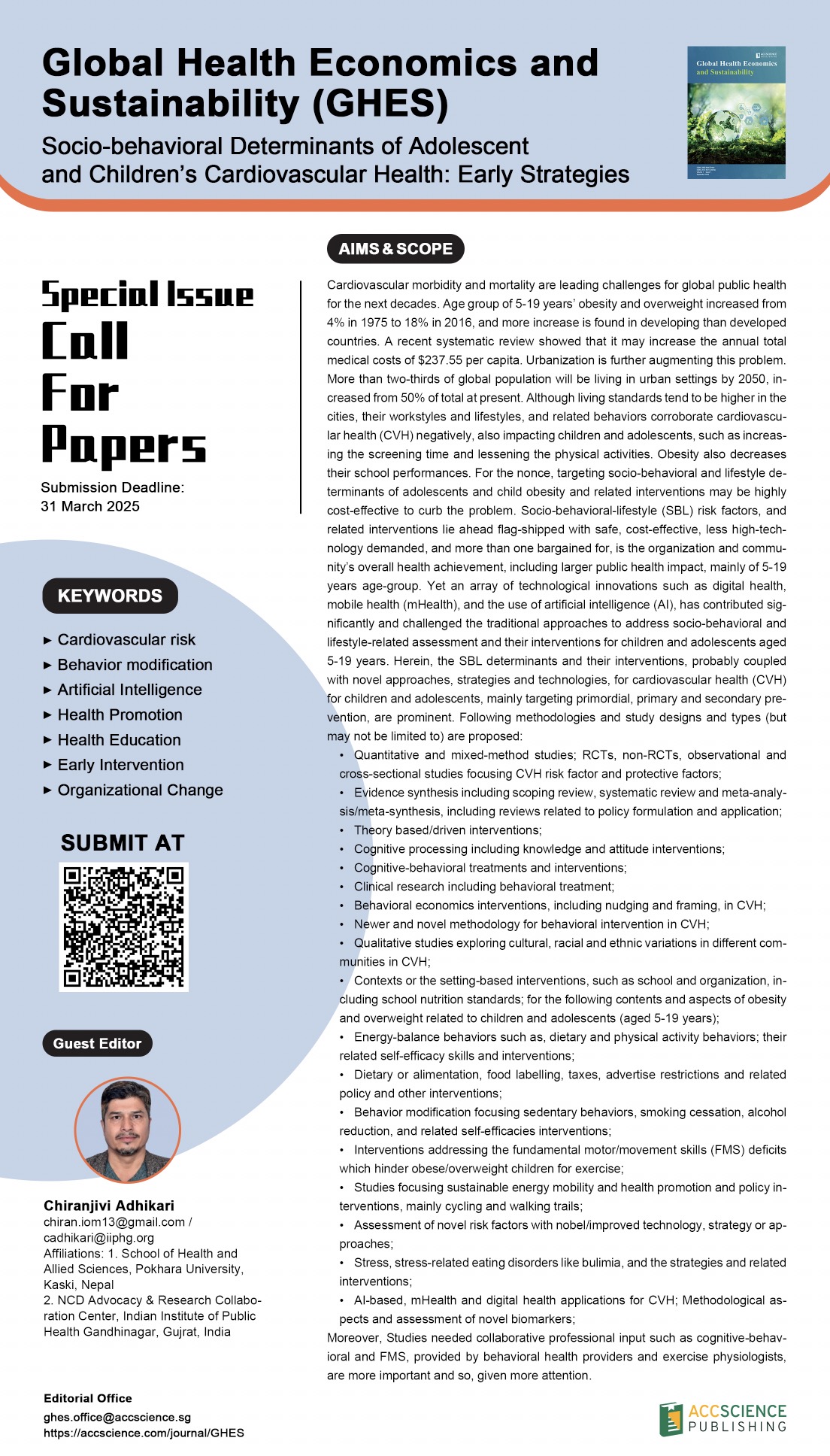
Aims & Scope:
Cardiovascular morbidity and mortality are leading challenges for global public health for the next decades. Age group of 5-19 years’ obesity and overweight increased from 4% in 1975 to 18% in 2016, and more increase is found in developing than developed countries. A recent systematic review showed that it may increase the annual total medical costs of $237.55 per capita. Urbanization is further augmenting this problem. More than two-thirds of global population will be living in urban settings by 2050, increased from 50% of total at present. Although living standards tend to be higher in the cities, their workstyles and lifestyles, and related behaviors corroborate cardiovascular health (CVH) negatively, also impacting children and adolescents, such as increasing the screening time and lessening the physical activities. Obesity also decreases their school performances. For the nonce, targeting socio-behavioral and lifestyle determinants of adolescents and child obesity and related interventions may be highly cost-effective to curb the problem. Socio-behavioral-lifestyle (SBL) risk factors, and related interventions lie ahead flag-shipped with safe, cost-effective, less high-technology demanded, and more than one bargained for, is the organization and community’s overall health achievement, including larger public health impact, mainly of 5-19 years age-group. Yet an array of technological innovations such as digital health, mobile health (mHealth), and the use of artificial intelligence (AI), has contributed significantly and challenged the traditional approaches to address socio-behavioral and lifestyle-related assessment and their interventions for children and adolescents aged 5-19 years. Herein, the SBL determinants and their interventions, probably coupled with novel approaches, strategies and technologies, for cardiovascular health (CVH) for children and adolescents, mainly targeting primordial, primary and secondary prevention, are prominent. Following methodologies and study designs and types (but may not be limited to) are proposed:
- Quantitative and mixed-method studies; RCTs, non-RCTs, observational and cross-sectional studies focusing CVH risk factor and protective factors;
- Evidence synthesis including scoping review, systematic review and meta-analysis/meta-synthesis, including reviews related to policy formulation and application;
- Theory based/driven interventions;
- Cognitive processing including knowledge and attitude interventions;
- Cognitive-behavioral treatments and interventions;
- Clinical research including behavioral treatment;
- Behavioral economics interventions, including nudging and framing, in CVH;
- Newer and novel methodology for behavioral intervention in CVH;
- Qualitative studies exploring cultural, racial and ethnic variations in different communities in CVH;
- Contexts or the setting-based interventions, such as school and organization, including school nutrition standards; for the following contents and aspects of obesity and overweight related to children and adolescents (aged 5-19 years);
- Energy-balance behaviors such as, dietary and physical activity behaviors; their related self-efficacy skills and interventions;
- Dietary or alimentation, food labelling, taxes, advertise restrictions and related policy and other interventions;
- Behavior modification focusing sedentary behaviors, smoking cessation, alcohol reduction, and related self-efficacies interventions;
- Interventions addressing the fundamental motor/movement skills (FMS) deficits which hinder obese/overweight children for exercise;
- Studies focusing sustainable energy mobility and health promotion and policy interventions, mainly cycling and walking trails;
- Assessment of novel risk factors with nobel/improved technology, strategy or approaches;
- Stress, stress-related eating disorders like bulimia, and the strategies and related interventions;
- AI-based, mHealth and digital health applications for CVH; Methodological aspects and assessment of novel biomarkers;
Moreover, Studies needed collaborative professional input such as cognitive-behavioral and FMS, provided by behavioral health providers and exercise physiologists, are more important and so, given more attention.
Shaping adolescent lives: The influence of personality traits on mental health and behavioral outcomes


